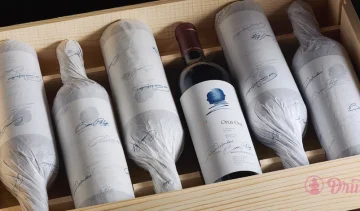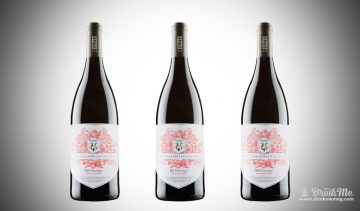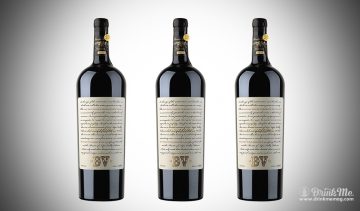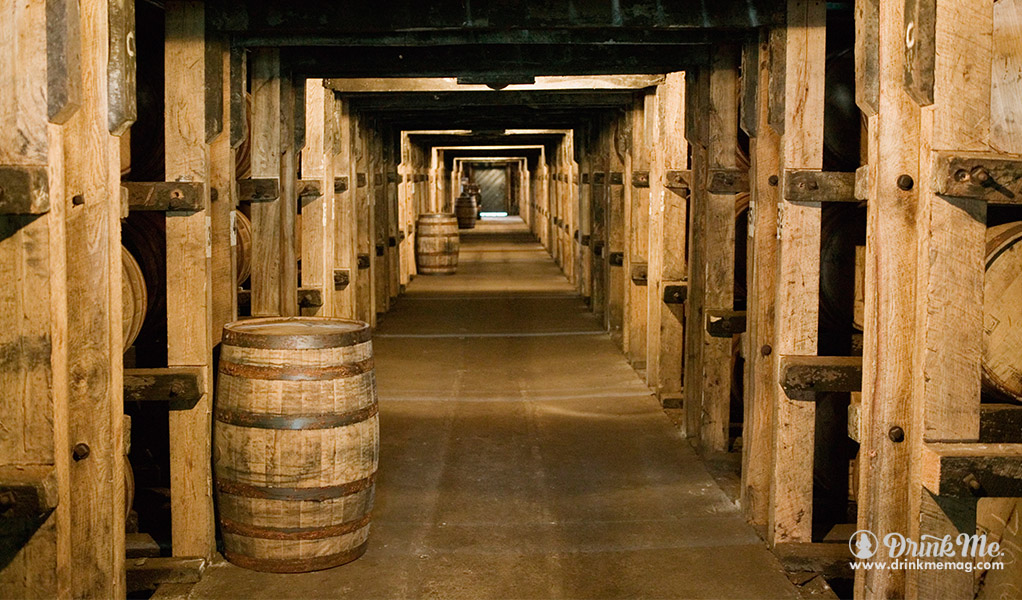An entirely new category of spirit has quietly emerged over the last few years on the shelves of finer liquor stores and releases from dozens of distilleries appear every season. It is a category so new that the government doesn’t know what to call it, and unfortunately will not let the producers call it what it truly is – barrel-aged gin.
It started with a simple question: What did gin taste like more than 100 years ago?
Undoubtedly, there were barrels involved. Wooden casks were the storage vessel of choice well into the 20th Century. Early editions of the Savoy cocktail book show advertisements for barrel-aged gins. Only since the mid-century have barrels have disappeared from gin recipes.
One of the first, if not the first, new gin out of the barrel was Citadelle Reserve Gin. Working with a historical recipe from the archives of Dunkirk, France, Alexandre Gabriel, President of Cognac Ferrand, resurrected a brand that flourished from 1775 until the 20th Century. “In one of the manuscripts of the time, I have discovered the Citadelle of the time was supposed to be smuggled to England in small casks (by Royal Order!).” said Gabriel. This set off a light in Gabriel’s head, “It reminded me that, at the time, the only real storing vessel was in a cask. This is when I decided to start aging gin and see what happens.”
In studying the effects that the barrel had on the spirit, Gabriel learned that he had to tweak the recipe to account for the way the flavor profile changed in the barrel. This evolution in recipe has lead to the release of Citadelle Reserve in vintages from 2008-2012, each with a similar but distinct character. The Citadelle remains closer to the classic gin in flavor than some of the others in the category.
About the same time that Gabriel began aging gin, two distillers in America were also experimenting with resting gin in barrels with very different results. The flavors they created contain more barrel notes and deviate farther from a classic gin than the Citadelle.
Tad Seestedt, of Ransom Spirits in Sheridan, Oregon, worked with author/mixologist David Wondrich on solving a puzzle. “We talked about trying to replicate what an Old Tom Gin from the 1700s would have tasted like,” said Seestedt. “One of the things we came across was that nothing at the time would have been sold in bottles. 150 years ago, gin came overseas in casks and would have arrived at the bar like that.”
Using only organic ingredients, he started laying down gin from a simple recipe that called for only six botanicals that would have been readily available in the 1700s. He cleaned the residue out of Pinot Noir barrels in the Ransom Winery, and started resting gin in used Limousin oak, to mimic what would have been done at the time. Ransom Spirit’s Old Tom Gin was also first released in 2008.
Where the Citadelle Reserve has the flavor profile of a gin that has been augmented by resting in a barrel, Ransom’s Old Tom Gin is a spirit that has morphed into an entirely distinct flavor profile, where the barrel plays a more prominent roll.
Following a similar track, was Croatian-born Davorin Kuchan, who founded Old World Spirits in Belmont, California. Kuchan’s Rusty Blade gin steps further into the deep woody notes.
“Growing up in Croatia, we didn’t have a lot of money,” said Kuchan, a third-generation distiller. “Stainless Steel containers were very expensive but Balkan wood containers and barrels were readily available.”
It was a natural progression for Kuchan to start aging gins. “When we started making the gin, I thought it would be cool if we had a bridge between the gin and the brandies we make,” he said. Kuchan uses a combination of Nevers Oak and Limousin Oak. “I love to experiment with wood. I believe wood is another tool in the distiller’s toolkit.”
Kuchan uses the same recipe as his regular Blade Gin, and observes how the different botanicals age. “The lighter fruitier flavors become rounder and the earthier flavors become more pronounced as they combine with the barrel notes of vanillin and maple,” said Kuchan. “The orange becomes like baked orange. The ginger becomes like caramelized ginger.”
And while the above distillers are working with French oak, others are working with Bourbon barrels. Paul Hletko, of Few Spirits in Evanston, Illinois, uses new charred American white oak barrels as well as used bourbon and rye barrels in making his Barrel Gin.
Few Spirits Barrel Gin started out as a one-off but was too good to be forgotten.
“We made it the first time as a badge of honor for starting my own business,” said Hletko. “I wanted to do something so dumb as to get fired from any other job, and I threw out the recipe. Then, when we went back to the barrel to taste it, our jaws dropped and we hustled to recreate it!”
For throwing out the recipe, Hletko says he would definitely fire himself, now.
His profoundly flavor-forward spirit bridges the gap between bourbon and gin.
“I typically call it a gin that drinks like whiskey,” said Hletko. “It is clearly and unmistakably gin, with juniper and coriander plus pepper spice, but the texture and mouthfeel are more like whiskey than gin.”
Charles (Ted) Palmer of Roundhouse Spirits in Boulder Colorado feels similarly about his Imperial Barrel Aged Gin — a spirit that his regular customers have nicknamed “Ginskey.”
“My aim was to go for a more bourbonesque aging profile to the gin,” said Palmer, “darker color, rounder flavor and sweetness of the barrel that you would get with the bourbon.”
“The barrel gives my gin a sweet caramel smoothness and a cinnamon bite, but there isn’t any cinnamon in my recipe,” said Palmer. “It also gets a vanilla note like you’d get with any whiskey aged in a new barrel. The best way to describe it is a botanical whiskey.”
And though he has produced something very American in character, the inspiration came from a trip to the Netherlands.
“I had only been drinking gin for a few years and found most English gins to be a commodity like vodka — had one, you’ve had them all,” said Palmer. “I discovered Dutch gins had a whole different flavor and character, like micro-brewed beers do. I really liked the flavors in Ould Genevers and had to make my own.”
And no discussion of barrels and gin would be complete without looking at its predecessor, Oude Genever and its sweeter softer flavor profiles. Bols has also resurrected a recipe from 1820 to create Bols Barrel Aged Genever, a spirit that achieves a fine balance between the woody characters of fine whiskies and juniper flavors. It is aged a minimum of 18 months in Limousin oak, using a variety of new and used genever barrels.
“During maturation process, the precious distillate undergoes a substantial change in color, fragrance, and flavor under the influence of the wood,” said Tal Nadari, Managing Director for Bols USA. “This gives Bols Barrel Aged Genever a pale golden color and light, sweet, velvety taste.”
One of the American barrel-aged gins retained the character of a gin rather than branching into hybrid territory, Rogue Spirits Pink Spruce Gin, from Oregon. Pink gin boosts the evergreen flavors of the juniper by infusing Spruce into the botanicals for a bright and sappy spirit. The distillate is finished for about six months in Pinot Noir casks. Unlike Ransom’s Old Tom, these casks are not cleaned between uses. The leftover red wine lends a little color and flavor to the gin, giving its namesake pink color and a taste that is half way to a martini.
The introduction of oak to gin can be used subtly to augment the taste of gin and produce a softer, rounder, more complex flavor profile, as in the Citadelle Reserve. Or it can be taken to extreme to produce a hybrid spirit, which sits directly between whiskey and gin, as is the case with the spectacularly bold Few Sprits Barrel Gin. Whether pursued in a haphazard, experimental way or with methodical attention to historical production techniques, the barrel-aged gins are producing a wide variety of new flavor profiles to be explored.
Brands are popping up Big Gin, from Seattle already has a Bourbon Barrel Gin and is now poised to release a gin aged in a barrel used for peated whiskey. Dozens of craft distilleries from around the country have seen the emergence of this exciting new category and have released spirits making this an exciting time for gin drinkers to explore new flavors. Releases include Corsair’s Barrel-Aged Gin, from Tennessee, Copperworks Distillery’s Malt Barrel Gin, from Washington State and Smooth Ambler’s Stillhouse Barrel-Aged Gin from South Carolina. Larger brands have also jumped into the fray, such as Beafeater’s ultra-premium Burrough’s Reserve.
The only thing you won’t see from the brands that follow is the term “barrel-aged,” a phrase the government now says will confuse consumers. The Alcohol Tobacco Tax and Trade Bureau, defines gin as an un-aged spirit, therefore aged gin is a contradiction under the regulations. The early brands were allowed to use this description, but since that time, the TTB has beend enforcing an arcane rule. Expect see new barrel-aged gin releases labeled with creative terms like barrel-rested, oak-rested, reserve, … or, as St. George Spirits chose: Reposado Gin.
Tasting notes:
Citadelle Reserve Gin 2012 – 44% abv. – France
Light yellow in color, leaning to the green side. With prominent juniper presence in the nose, this is the only one of the barrel-aged gins that remained essentially a gin at-heart, instead of morphing into another type of spirit. The presence of the barrel added bass notes slightly soften this spirit relative to Citadelle’s un-aged gin. Citadelle Reserve lands on the palate with light floral notes, vanilla and the impression of sweetness. As with the nose, the barrel notes of vanilla and mild maple round the finish, taming the prominent juniper finish of the Citadelle’s flagship gin.
Few Spirits Barrel-Aged Gin – 46.5% abv – Illinois, USA
Deep amber and bourbonesque in color. This spirit hits the nose with the oddly pleasant combination of green banana peel and juniper. The taste is the same as its aroma — a hybrid between bourbon and gin. It enters the palate like a soft bourbon, thick and round with impressions of oak bark and smoke. Rising sensations of juniper take over mid-palate and fill the mouth with evergreen in a very pleasant transition. With hints at candied oranges and the musty sweetness of a demerara rum, This bold flavorful spirit pushes the limits in balancing the tannins of the barrel and the botanicals without losing the essence of what a gin should be. To be sipped on its own or to augment any classic bourbon cocktail.
Ransom Spirits Old Tom Gin — 44% abv. – Oregon, USA
Pale amber color. The spring forest fragrance carries a mixture of fresh evergreen sap and earthy minerals. Delicate Vietnamese cinnamon wafts over the top with hints of white blossoms and sandalwood. The Christmassy taste has an incredible balance of juniper berry and oak bark , black pepper, clove, honeysuckle and hedge nettle. The candied-orange finish lingers gently, revealing once again delicate hints of cinnamon. A genuine sipper but a fabulous base for a cocktail of winter citrus, spicy bitters and maple syrup.
Old World Spirits Rusty Blade – 47% abv – California, USA
Copper amber — This warming spirit has the aroma of warm winter drinks, bold cinnamon mixes with juniper, lavender, violets, anise, with mulling spices of nutmeg and clove. Juniper is the first note on the palate followed quickly by robust blend of smoke, cinnamon, vanilla, maple, ginger, angelica, and allspice. This is much bolder than the Ransom Old Tom with more barrel notes relative to the juniper and ever bit as intriguing.
Boomsma Oude Fine Old Genever – 40 % abv – Holland
Clear pale yellow. With a nose reminiscent of Chardonnay in floral tones of white blossoms and minerals. this incredibly light spirit reveals a velvety warmth of vanilla, juniper and citrus on the palate. Ephemeral, yet with length and complexity. This would be an excellent spirit for citrus cocktails.
Bols Barrel-Aged Genever – 42% abv – Holland
Yellow straw color. A simple and slightly reticent nose of lemon meringue, soap, strawberry and hints of grapefruit. The palate changes from citrus zest, wormwood, eucalyptus and creamy vanilla on the tip of the tongue to a clover-blossom-honey aftertaste. Mildly viscous with tannins that remind of lemon balm, it is still very silky — sophisticated, complex and assured. The finish is soft and of medium length. A spirit that is worthy of sipping on its own but combined with a pointed vermouth makes a lovely martini.
Rogue Pink Spruce Gin – 45% abv – Oregon, USA
Mildly pink, like rosewater in color. The unusual nose of grapefruit, spring-fresh evergreen, rosemary, leather and over-ripe banana. The taste is surprisingly lively crisp and clean, with hints of menthol and lemon. The spruce adds a light brightness to the juniper and the residual Pinot Noir in the barrel take this gin half-way to a martini. The effect of the wine barrel softens and rounds out the fusels in the finish as subtle butterscotch creeps into the aftertaste. This would be an excellent candidate for Champagne cocktails.
Watershed Distillery Bourbon Barrel Gin – 44% abv – Ohio, USA
Clear, pale straw yellow. With a mild balanced nose of cinnamon, citrus zest, thyme, laurel and French vanilla, it is mostly what you would expect. The palate brings a French oak taste from a bourbon barrel. Sappy evergreen that was absent in the nose comes alive on the tongue, along with citrus pith, apple, cinnamon, mint and cedar. This viscous spirit is bright and youthful, slightly stinging with and finishes with impressions of candied lemon.
Corsair artisan Distillers Barrel Aged Gin – 46% abv – Tennessee, USA
Cloudy with a pumpkin-pie, orange/brown color. Finished in Spiced rum barrels, the rum spices of nutmeg and coriander remain in the nose of this spirit. They are in slight conflict with the gin botanicals in a leathery palate of vanilla and caramel.
Smooth Ambler Stillhouse Barrel-Aged Gin 49.5% abv – South Carolina, USA
Clear and faintly colored amber. Forward and nose of pine, citrus, lavender, dry grass and minerals. Green grass, cedar, orange zest and vanilla on the palate with a tingly finish. More gin-like and less whiskey like than most American offerings.
Roundhouse Spirits Imperial Barrel-Aged Gin 47% abv – Colorado, USA
Clear Amber. The clean nose of mint, vanilla, juniper and clove is followed by a young fiery palate. Sharp juniper competes for attention in an unusual mélange of blueberry sweetness, mint, vanilla, orange zest, sea-spray and campfire. Spicy cloves, hot cinnamon, laurel and rosemary linger on the tongue.
Breuckelen Distillery Barrel-Aged Gin 45% abv. – New York, USA
Clear yellow/amber color. The nose is an estery mix of green plantains, clove, cedar, cherry and juniper. Barrel tannins and juniper make a woody resiny mix with candied orange.










